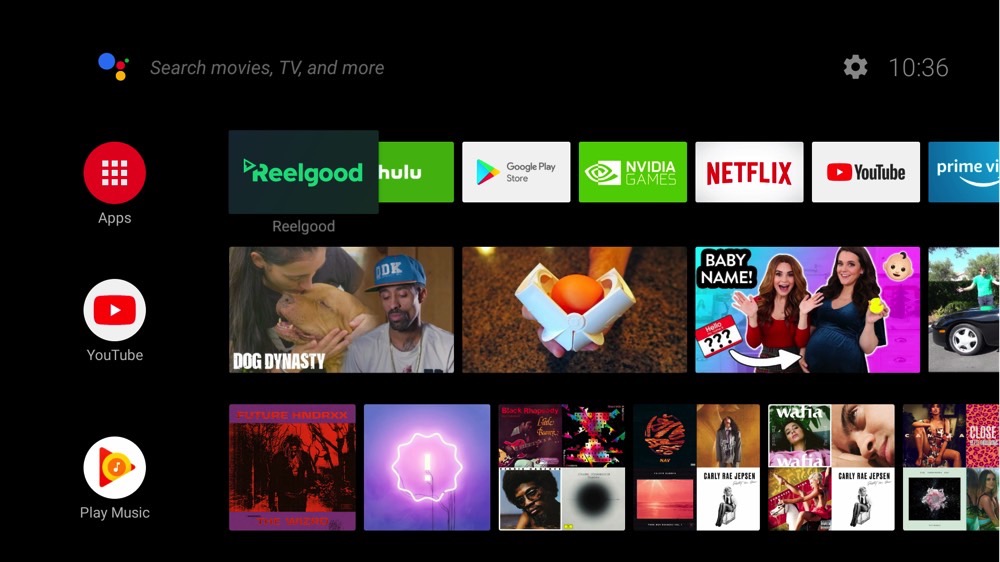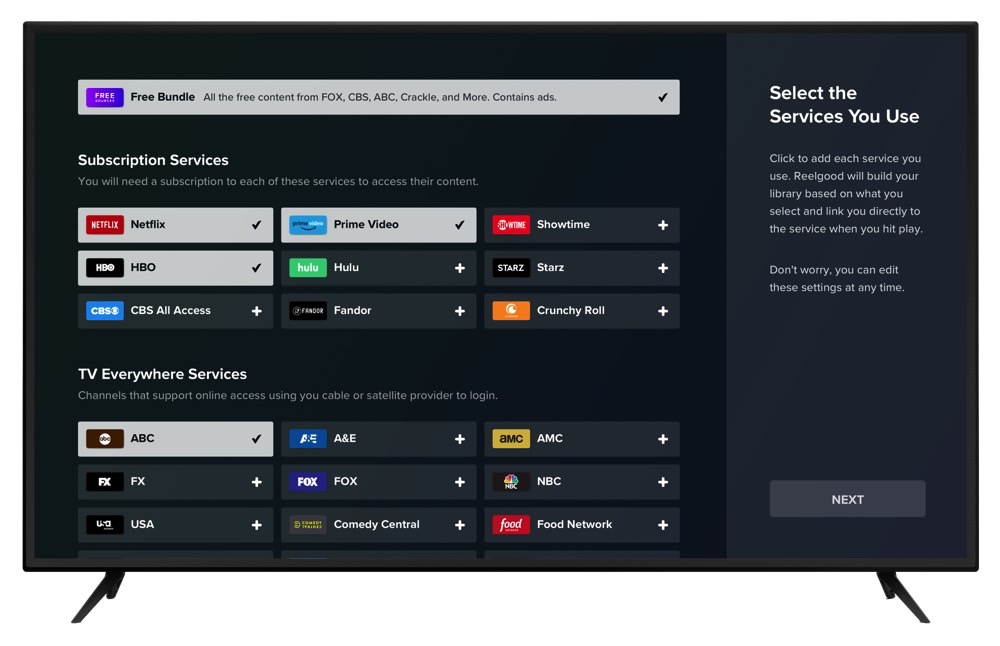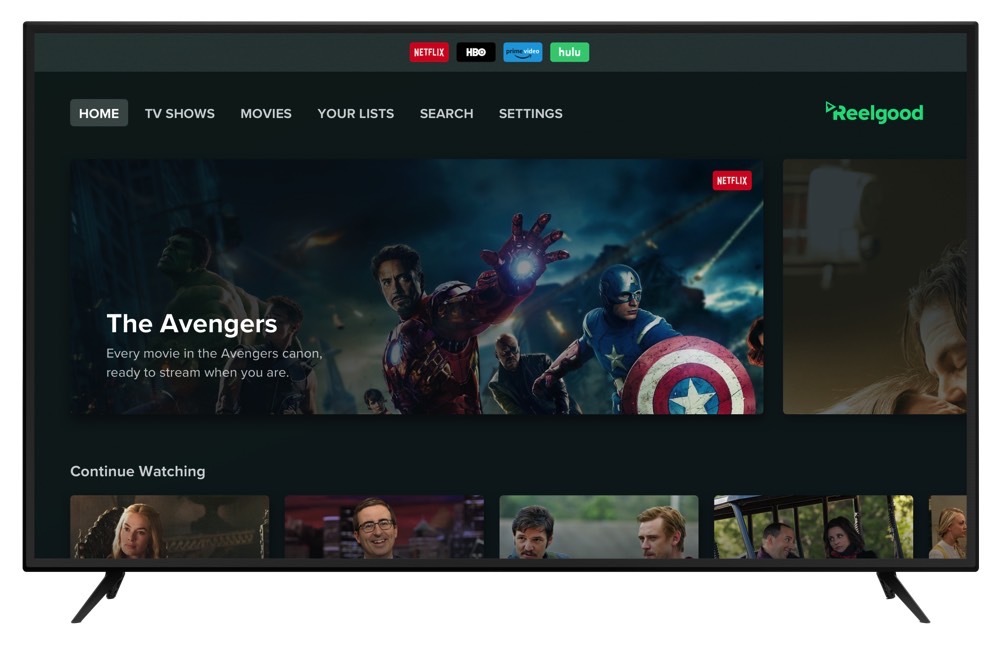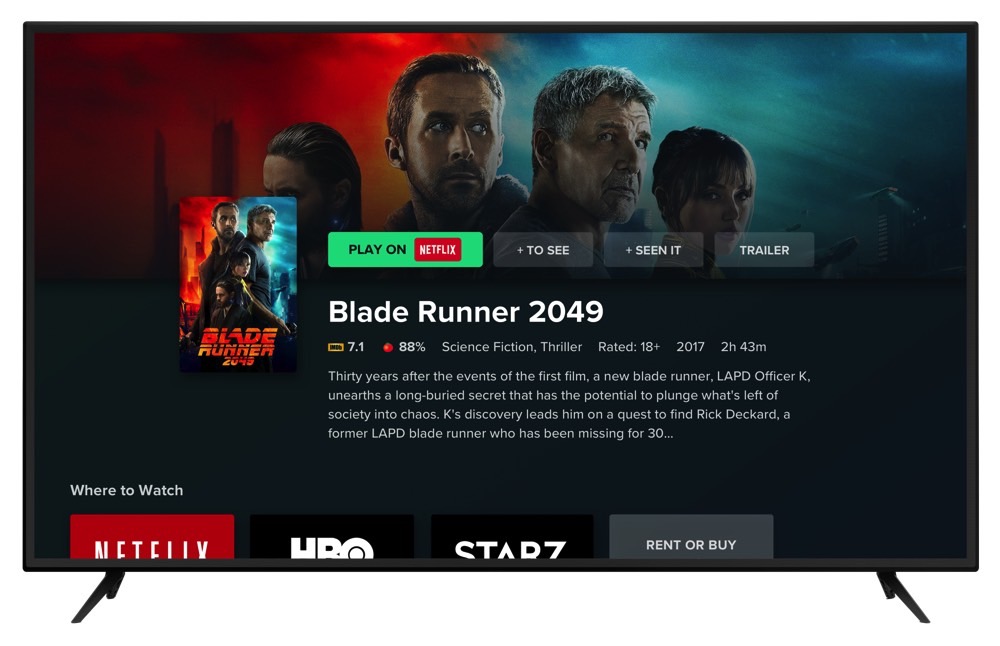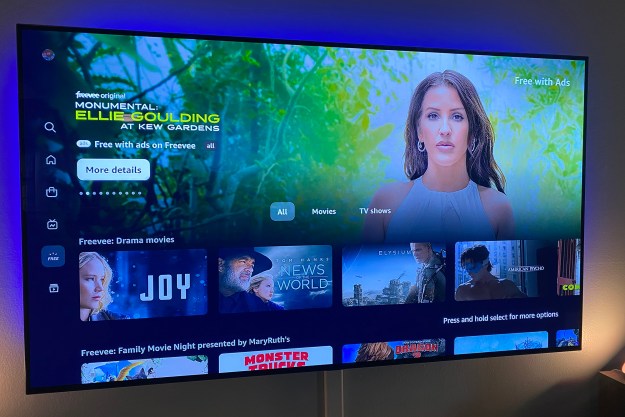Reelgood, a website that has become a go-to service for many people thanks to its streaming video guide that lets you browse content from dozens of sources in a single interface, is coming to smart TVs. The company claims that by the time the rollout is done in 2020, roughly half of all smart TV households in the U.S. will have access to its app, which will appear on the home screen. It will mark the first time a service of this kind can be accessed without an external streaming device.
Reelgood lets users identify all of the streaming services they have access to, from over 52 options including Netflix, Hulu, HBO, and Amazon Prime, plus dozens of “TV everywhere” channels like ABC, Fox, NBC, and CBS. Once those sources have been added, Reelgood can categorize all of the shows, movies, and events, thereby giving users the ability to browse or search all of that content in one interface. Functionally speaking, it’s a lot like Apple’s TV app, but with support for fewer services. Critically, however, it does include Netflix, which was absent from the TV app at launch, and even now isn’t fully integrated.
Users that choose to sign in to Reelgood, will also benefit from Reelgood’s recommendation engine. Recommendations can be sourced from any of the services you use and, in many cases, these suggestions are better than what’s available within a service’s native app. Netflix’s own recommended shows are often repetitive, and fail to surface some real gems, which is why Realgood acquired Netflix Roulette from its inventor in 2017 and integrated it into its platform. Another bonus: You can filter content by IMDB and Rotten Tomatoes scores.
This feature set gives Reelgood users a unique experience, combining the best tools from services like Apple, Roku, and Plex into one well-organized interface.
If you pick a show and already have that service’s app installed on your TV, Reelgood will open that app and take you directly to the show. If you don’t have the app, you’ll be directed to your app store to download it. If there’s no app for that service for your smart TV, Reelgood will still show you that service’s programs, but you will be told they can only be streamed on another device.
The addition of the Reelgood app was made possible by its partner, Samba TV, whose technology is already installed on millions of TV in the U.S. including brands like LG, TCL, Sharp, Sony, Toshiba, Sanyo, and Philips. Samba TV’s own recommendation engine can be used to supplement suggestions made by Reelgood, but prospective users should be aware that U.S. lawmakers have called for an investigation of the privacy policies of smart-TV manufacturers, after seeing an NYT report on Samba’s data-gathering practices. A fine-toothed reading of the company’s terms should be done before agreeing to use the service.
It’s not just smart TVs that are getting in on the Reelgood action. Android TV streamers, like Nvidia’s Shield TV will be among the first to receive access to a Reelgood app, and Digital Trends learned the company has already added tvOS and Roku to its development road map. Possible integrations with over-the-air receivers like Tivo may follow.
Updated to clarify that Samba is not currently being investigated, as had been previously reported.
Editors' Recommendations
- New sports streaming service aimed at 60 million ‘cord-nevers’
- Holograms are coming to university classrooms
- LG is bringing Baby Shark and high-end art to its smart TVs with a range of new apps
- You Asked: streaming inequality, Dragon showdown, and holy grail TVs
- Zoom calls are coming to Sony TVs

